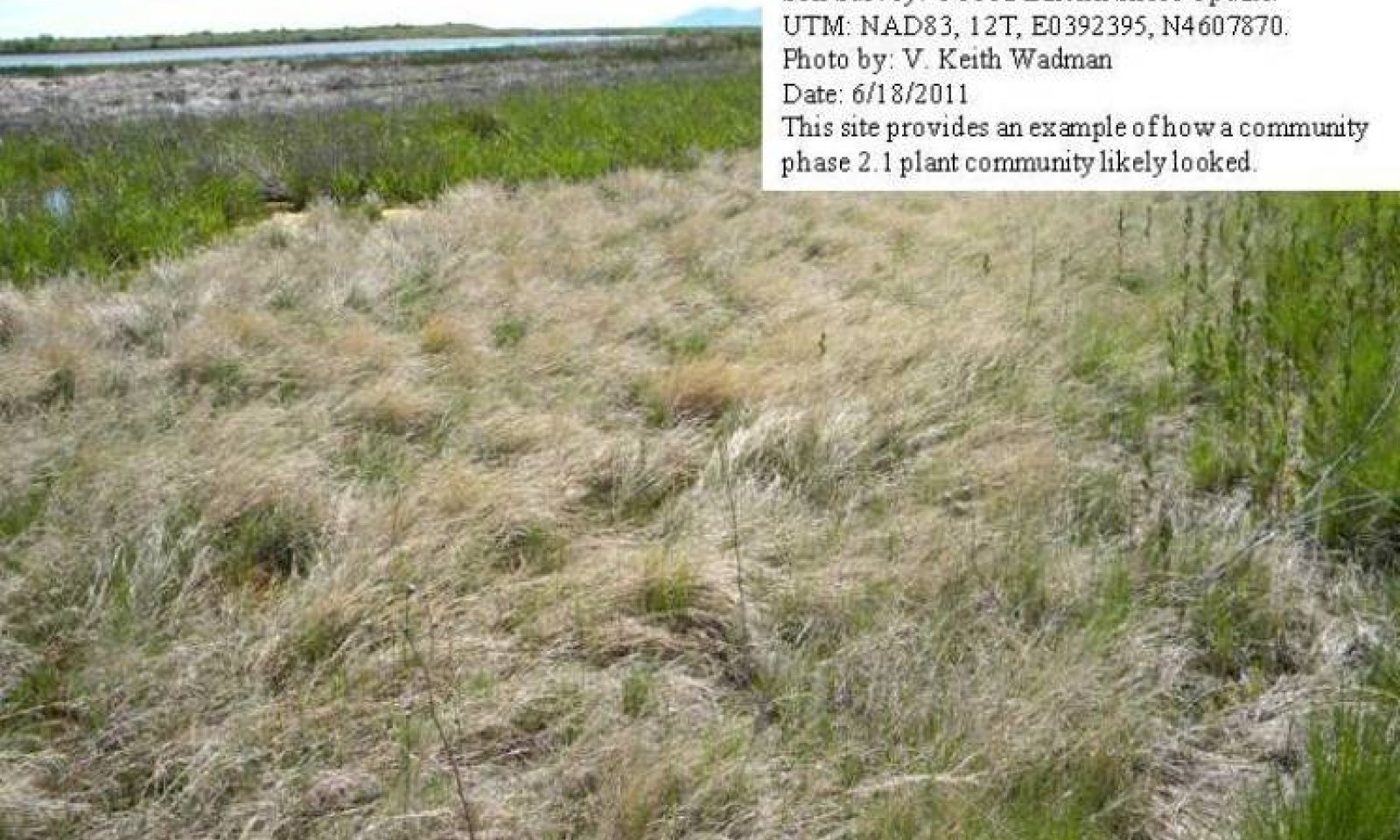
Wet Saline Meadow (Saltgrass)
Scenario model
Current ecosystem state
Select a state
Management practices/drivers
Select a transition or restoration pathway
- Transition T1A More details
- Transition T2A More details
-
No transition or restoration pathway between the selected states has been described
Target ecosystem state
Select a state
Description
The reference state represents the plant communities and ecological dynamics of the wet saline meadow site. This state includes the biotic communities that become established on the ecological site if all successional sequences are completed under the natural disturbance regime. The reference state is generally dominated by saltgrass and arctic rush. The reference state is self sustaining and resistant to change due to high resistance to natural disturbances and high resilience following natural disturbances. When natural disturbances occur, the rate of recovery is variable due to disturbance intensity. Once invasive plants establish, return to the reference state may not be possible.
Reference State: Saltgrass/arctic rush state with natural fluctuations that form either a mixed grass meadow or a saltgrass dominated meadow depending on the sites natural disturbance history.
Indicators: A community dominated by saltgrass and arctic rush.
Feedbacks: Improper livestock grazing of perennial grasses and/or other disturbances that may allow for the establishment of invasive species.
At-risk Community Phase: This state is at risk when palatable native plants are stressed and nutrients become available for invasive plants to establish.
Trigger: The establishment of invasive plant species.
Submodel
Description
The current potential state is similar to the reference state, however invasive grasses and/ or forbs are now present in all community phases. This state still has the visual aspect of a saltgrass meadow. Foxtail barley, arctic rush and alkali bluegrass are other primary perennial grass or grasslike species present. Fivehorn bassia, povertyweed and other less palatable species now make up a large portion of the herbaceous layer.
Primary disturbance mechanisms include native herbivore and domestic livestock grazing. Timing of these disturbances dictates the ecological dynamics that occur. The current potential state is still self sustaining; but is losing resistance to change due to lower resilience following disturbances. When disturbances occur, the rate of recovery is variable depending on severity.
Current Potential State: Saltgrass meadow state with various other native and non-native grasses and forbs present.
Indicators: A community dominated by saltgrass and arctic rush where other native perennial grasses and forbs are also present. Invasive grasses and/or forbs are present.
Feedbacks: Frequent disturbances that may allow annual invasive species such as fivehook bassia to dominate.
At-risk Community Phase: As increased disturbance frequency allows for the increase and/or dominance of annual grasses and forbs, this community is at greater risk.
Trigger: Reoccurring disturbance that results in a dominance of annual grasses and/or forbs in the herbaceous layer.
Submodel
Description
This state occurs when the site is burned or chemically treated to reduce saltgrass and other unwanted herbaceous species. The resulting plant communities can be highly variable ranging from the recovery of desired native species to the dominance of of invasive weeds such as salt cedar, fivehorn bassia, poverty weed and various mustard species.
Invasive Forb State: Burned or chemically treated community phases influenced by livestock grazing practices and fluctuating water tables.
Indicators: Perennial, annual, invasive grasses, grasslikes and forbs present in various amounts.
Feedbacks: Livestock grazing practices and fluctuating water tables that maintain or degrade or desireable species and increase non-native, weedy species present in the community.
Trigger: The further establishment of salt cedar, fivehorned bassia and/or other weedy species decrease perennial production and increase bare ground.
Submodel
Mechanism
This transition is from the native perennial grass and grasslike community in the reference state to a state that contains non-native, invasive species. Events typically include the establishment of invasive grasses and forbs, and an increase in saltgrass,arctic rush and other less palatable species. Factors that drive such events may include any combination of improper livestock grazing, a fluctuating water table, and the presence of a seed source for invasive species. Invasive species such as fivehorn bassia however have been known to invade intact perennial plant communities with little to no disturbance. Once invasive species are found in the plant community a threshold has been crossed.
Mechanism
This transition is from the current potential state to an altered state created by chemical treatment or fire. Results can vary widely from little site production to a healthy mixed perennial grass and grasslike community.Non-native, invasive species may also dominate the site. Factors that drive such events include, improper livestock grazing of palatable perennial grasses, fluctuating water tables and the availability of invasive weeds.
Once site is converted, a threshold has been crossed.
Model keys
Briefcase
Add ecological sites and Major Land Resource Areas to your briefcase by clicking on the briefcase (![]() ) icon wherever it occurs. Drag and drop items to reorder. Cookies are used to store briefcase items between browsing sessions. Because of this, the number of items that can be added to your briefcase is limited, and briefcase items added on one device and browser cannot be accessed from another device or browser. Users who do not wish to place cookies on their devices should not use the briefcase tool. Briefcase cookies serve no other purpose than described here and are deleted whenever browsing history is cleared.
) icon wherever it occurs. Drag and drop items to reorder. Cookies are used to store briefcase items between browsing sessions. Because of this, the number of items that can be added to your briefcase is limited, and briefcase items added on one device and browser cannot be accessed from another device or browser. Users who do not wish to place cookies on their devices should not use the briefcase tool. Briefcase cookies serve no other purpose than described here and are deleted whenever browsing history is cleared.
Ecological sites
Major Land Resource Areas
The Ecosystem Dynamics Interpretive Tool is an information system framework developed by the USDA-ARS Jornada Experimental Range, USDA Natural Resources Conservation Service, and New Mexico State University.






